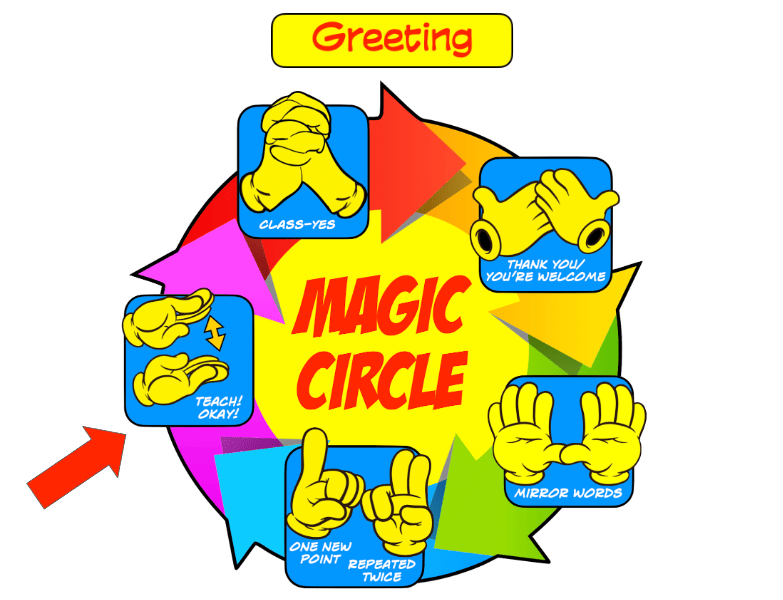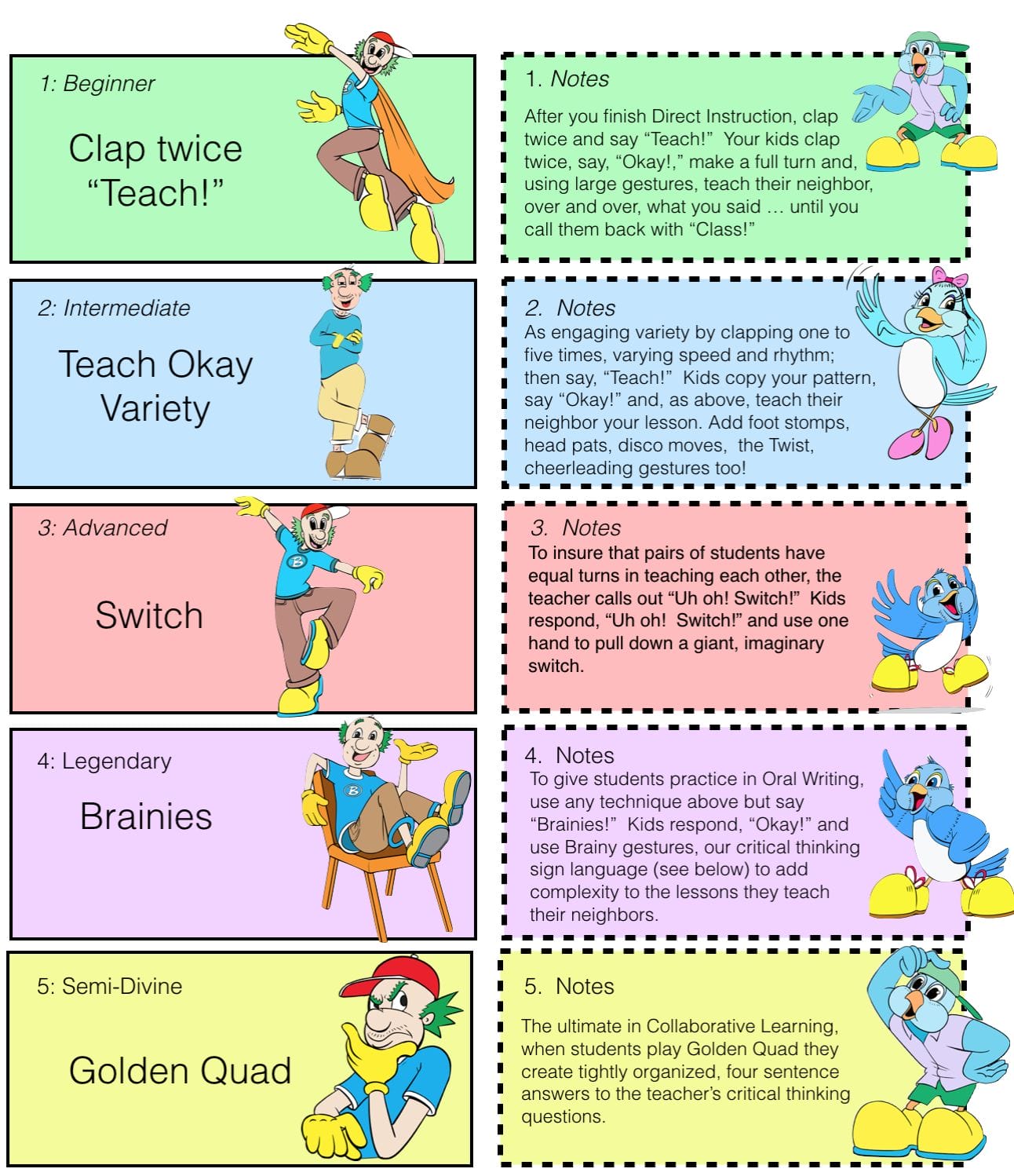Magic Circle: Teach OK
Collaborative Learning

Teach-Okay is WBT's version of Collaborative Learning. Simple as pie ... after you've taught your one-minute lesson, clap twice and exclaim "Teach!" Your kids clap twice and exclaim, "Okay!"
Students turn to their neighbors, use big gestures, and paraphrase what you said. Paraphrasing, of course, is a key intellectual skill. Kids don’t truly understand lessons until they can translate what they’ve heard into their own words.
The Teacher in a student pair summarizes your lesson and makes explanatory gestures. The Student mirrors the Teacher’s gestures. Thus, it is easy to spot off-task kids … they aren’t moving!! Simply stand beside them, whisper, “Big gestures, please!”
As you walk around the room, checking comprehension, you'll know whether to repeat your lesson, or go on to the next point. This is the simplest and most powerful formative assessment you will ever use. In every one-minute lesson, spend at least 30 seconds checking for comprehension.
We can’t judge students’ understanding by their facial expressions. Too often we are shocked during assessments when we discover how little of our lessons kids absorbed. In place of testing every few months or even every week, in WBT we evaluate student understanding every 60 seconds. Walk the room, check comprehension by listening to students paraphrase your last concept.
When you're ready, increase the critical thinking during collaborative learning with the Upgrades at the bottom of the page. During Teach OK, students can be repeating the teacher's lesson, paraphrasing the lesson, coming up with their own examples, orally filling in sentence frames, comparing, contrasting, using Brainies...the sky is the limit! This is where the true magic of collaborative learning comes in.

Teach-Okay is WBT’s answer to traditional education’s weary think-pair- share. You may be concerned that we don’t give students time to contemplate the teacher’s point.
We believe that when we ask kids to “think,” we have no way to tell what they’re thinking about. Is it what we just said or how to get to the front of the lunch line? Talking through a response is a good way to think through a response. Call it “ideational fluency.”
Students hear a teacher’s point and improve their understanding by paraphrasing it to a neighbor. Teachers can instantly assess right on the spot to determine if students are ready for more, or if they need to review.